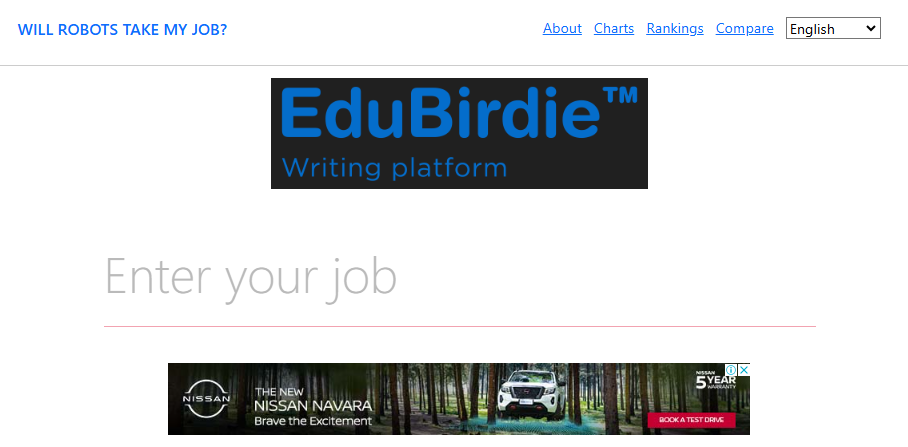For More Free Videos, Subscribe to the Rhodes Brothers YouTube Channel.
“The fear of losing your job to AI is real, but the opportunity to create something extraordinary with it is even greater.” – John S. Rhodes

Artificial intelligence (AI) is no longer just a buzzword – it’s a reality that is reshaping industries, creating new opportunities, and, yes, eliminating jobs. The thought of losing your livelihood to a machine can be terrifying, but here’s the good news: you have the power to stay ahead of the curve. By understanding AI, leveraging its potential, and creatively integrating it into your work, you can future-proof your career.
In this guide, we’re going to dive deep into practical strategies that will help you not only avoid losing your job to AI but also thrive in this new era of technology. From identifying the right skills to leveraging AI tools, this post will equip you with actionable steps to take control of your future.
As John S. Rhodes of the Rhodes Brothers wisely said in a recent video, “Turn AI into a secret that provides tremendous power. You control the AI; don’t let it control you.”
TL;DR
- AI is transforming job markets – white-collar jobs like middle management and development are at the highest risk.
- Hands-on, blue-collar jobs like nursing, roofing, and snow-shoveling are less vulnerable.
- To thrive, focus on collaborating with AI, not competing against it.
- Creativity, adaptability, and leveraging AI tools will set you apart.
- Avoid falling into the trap of over-regulation and fear-based thinking about AI.
- Use AI to amplify your unique skills, create new opportunities, and stay ahead.
How to Future-Proof Your Career in the Age of AI
The rise of artificial intelligence (AI) is transforming industries at an unprecedented pace, leaving many professionals wondering what the future holds for their jobs. Will AI replace you? Or will it provide you with tools to excel like never before? The truth is, the answer lies in how you adapt. With the right strategies, you can not only secure your career but also thrive in this rapidly changing landscape.
One of the first steps to future-proofing your career is understanding which jobs are at risk and which ones are safer from AI disruption. Let’s dive into this crucial topic.
Understand the Jobs at Risk (and Those That Aren’t)
AI is great at handling repetitive, data-driven tasks, which means certain roles are more vulnerable than others. For example:
- High-risk jobs: Middle management, software developers, graphic designers, customer service representatives, and other roles that rely on predictable patterns and processes.
- Low-risk jobs: Hands-on roles such as nursing, chiropractors, roofers, landscapers, and any job requiring physical presence or manual skills.
Why does this matter? Recognizing whether your job is vulnerable to disruption is the first step to future-proofing your career. If your job involves tasks that AI can easily take over, it’s time to pivot. But if your work requires human connection, creativity, or physical interaction, you’re in a better position.

Pro Tip: Use tools like Will Robots Take My Job? to assess the risk level of your current position.
Embrace AI as a Collaborative Tool, Not a Competitor
One of the best ways to protect your job from AI is to leverage it to do your work better, faster, and more efficiently. AI is not here to replace creativity – it’s here to enhance it.
Practical Ways to Collaborate with AI:
AI isn’t here to take your job—it’s here to make it easier, faster, and more efficient. By viewing AI as a collaborator rather than a competitor, you can use it to your advantage. Whether you’re looking to save time, spark creativity, or master new tools, AI can be your greatest productivity partner. Here are some practical ways to work alongside AI and thrive in your career.
- Automate repetitive tasks: Use AI tools like Zapier to automate simple workflows or Notion AI to streamline administrative tasks like drafting emails or generating summaries.
- Boost creativity: Tools like ChatGPT or Jasper can help generate ideas, write content drafts, or brainstorm marketing campaigns.
- Upskill with AI tools: If you’re a designer, learn AI-powered platforms like Canva’s Magic Design or Adobe Firefly. If you’re in marketing, explore customer insight tools like HubSpot AI to better understand your audience.
By collaborating with AI, you can focus on what you do best while letting the machine handle mundane tasks. This frees up your time for more meaningful and creative work.
As Albert Einstein famously said, “The measure of intelligence is the ability to change.” Embrace change by using AI to complement your unique talents.
Identify and Harness Your Unique Skills
John S. Rhodes emphasizes the importance of leveraging your “best human skills.” AI is powerful, but it can’t replicate your stories, experiences, and emotional intelligence.
How to Identify Your Unique Skills:
In an age where AI can handle repetitive tasks and even mimic certain human abilities, the key to staying relevant is understanding what makes you irreplaceable. While machines are great at crunching numbers and processing data, they lack the emotional intelligence, creativity, and nuanced judgment that only humans possess. Identifying your unique skills is the first step in leveraging those qualities to stand out in your career. Here’s how you can uncover and refine your personal strengths.
- Make a list of your strengths: What do you do better than most people? Consider both technical skills and soft skills.
- Focus on soft skills: Communication, empathy, and leadership are areas where humans excel over machines.
- Highlight creativity: Whether it’s storytelling, problem-solving, or strategic thinking, creativity is your superpower.
Once you’ve identified your strengths, figure out how AI can enhance them. For example:
- Writers: Use AI tools to draft or edit content, so you can focus on storytelling and narrative development.
- Managers: Use AI-powered analytics to make data-driven decisions while prioritizing human connection with your team.
- Healthcare workers: Leverage AI diagnostic tools to streamline administrative work, leaving more time for patient care.
Pro Tip: Keep a “skills inventory” and periodically update it to stay aware of your competitive edge.
Stay Ahead of AI Trends
The rapid pace of AI development means that staying updated is critical to staying relevant. Here’s how to stay ahead:
Practical Steps to Stay Informed:
In a world where AI is evolving at lightning speed, staying informed is one of the most powerful ways to future-proof your career. The more you understand AI trends, tools, and applications, the better equipped you’ll be to adapt and thrive in this ever-changing landscape. Here are some practical steps to help you stay ahead of the curve.
- Follow industry updates: Subscribe to newsletters like AI Weekly or watch the Rhodes Brothers YouTube Channel for valuable insights.
- Take online courses: Platforms like Coursera and Udemy offer affordable AI-related courses for beginners and professionals.
- Network with AI professionals: Join LinkedIn groups or attend AI-related conferences to learn from experts and stay informed about industry trends.
- Stat Alert: According to Gartner’s 2024 report, 90% of organizations will adopt AI technologies by 2026. Staying ahead of these trends will give you a competitive edge.Create Your Own Opportunities with AI
If your current job is at risk, don’t wait for the inevitable. Take control by creating new opportunities for yourself.
Ideas to Start Your Own Business or Side Hustle with AI:
AI isn’t just a tool for large corporations—it’s an opportunity for individuals to tap into innovative, scalable business ideas. Whether you’re looking to start a side hustle or transition to full-time entrepreneurship, AI can help you create unique solutions and capture a growing market. Here are some practical ideas to get you started.
- Launch a niche service: Use AI to create hyper-specialized products or services. For example, develop custom AI chatbots for small businesses.
- Offer AI consulting: Help companies integrate AI into their workflows to improve efficiency and productivity.
- Build AI-powered tools: If you have coding skills, create tools that solve specific problems in your industry.
As John S. Rhodes advises, “Create the job instead of cowering in fear. Flip it on its head and turn AI into a secret that provides tremendous power.”
Actionable Steps for Different Demographics
AI has the potential to revolutionize how we work and innovate, but the approach to using it varies depending on your career stage, demographic, and goals. Whether you’re just starting out, managing a busy professional life, or nearing retirement, there are actionable ways to embrace AI and make it work for you. Below, you’ll find tailored advice to help you navigate AI effectively based on your situation.
For beginners, the key is to start small and build familiarity with AI tools. Begin by experimenting with free, user-friendly platforms like ChatGPT, Canva’s Magic Design, or Notion AI. These tools can help you automate simple tasks such as drafting emails, brainstorming ideas, or summarizing text. A great way to deepen your understanding is by taking introductory courses, such as AI for Everyone by Andrew Ng on Coursera or beginner-level AI courses on Udemy. Joining beginner-friendly communities, such as Reddit’s r/ArtificialIntelligence or AI-focused LinkedIn groups, can also provide support and shared learning experiences. To avoid overwhelm, set small, achievable goals—like using AI to automate a daily task or create a simple project—and focus on learning through experimentation.
For millennials, who often juggle career growth, side hustles, and entrepreneurial ambitions, AI can be a game-changer for productivity and income generation. Use AI to automate and scale side hustles like dropshipping, freelance content creation, or social media management. Tools like Jasper AI, Shopify integrations, or Canva can help you streamline operations and save time. Staying updated on AI trends is critical for this demographic, as it allows you to pivot quickly when new opportunities arise. Following newsletters like AI Weekly or thought leaders on LinkedIn ensures you remain ahead of the curve. Additionally, focus on upskilling in your field by mastering AI tools tailored to your profession, such as HubSpot AI for marketing or Adobe Firefly for design. By leveraging AI, millennials can amplify their efficiency, tap into new markets, and create sustainable income streams.
For professionals nearing retirement, AI offers opportunities to stay engaged in your industry, share your expertise, or generate passive income. Consider using AI to consult or mentor others in your field, leveraging your experience to guide younger professionals while using AI tools to enhance your services. For example, ChatGPT can help you draft reports, analyze trends, or create training materials. If you’re looking to generate passive income, use AI to write eBooks, develop online courses, or create evergreen resources like templates or instructional videos. Platforms like Jasper AI can help you speed up the content creation process, while tools like Descript simplify audio and video editing for podcasts or tutorials. Starting a low-maintenance online business, such as a blog or YouTube channel, is another great option—AI can assist with tasks like content creation, SEO optimization, and editing. By staying connected through AI-focused communities or webinars, you can continue learning while extending the value of your lifelong expertise in ways that require less effort and stress.
Regardless of your demographic, some strategies apply universally. Experiment broadly with AI tools to uncover how they can fit into your personal and professional life. Build a personal brand by using AI to create engaging posts, blogs, or videos that showcase your unique expertise. Stay adaptable by dedicating time each week to exploring new tools and trends, as AI is constantly evolving. Above all, remember that AI is most powerful when paired with human creativity, intuition, and empathy. By focusing on collaboration rather than competition, you can use AI to complement your strengths and achieve your goals, no matter your career stage.
Common Mistakes to Avoid
The rise of artificial intelligence (AI) often sparks fear and uncertainty, especially around the idea of job displacement. Many people approach this topic with misconceptions or unproductive strategies. Below, we’ll outline common mistakes individuals and businesses make when navigating this concern, along with actionable solutions to address them effectively.
Reacting with Fear Instead of Curiosity
A common mistake is immediately fearing job loss without understanding the nuances of how AI impacts industries. This mindset can lead to panic, resistance to change, or avoidance of AI altogether.
Solution: Shift your mindset from fear to curiosity. Educate yourself about how AI is being implemented in your industry and the opportunities it presents for improving workflows, productivity, and innovation. Explore how AI can complement your skills rather than replace them.
Example: If you’re in customer service, look into how AI chatbots can handle repetitive tasks, freeing you to focus on complex and human-centric interactions.
Assuming AI Will Eliminate Jobs Without Creating New Ones
Many people believe AI will only destroy jobs, ignoring the history of technological advancements that have consistently created new roles, industries, and opportunities. This limited perspective can lead to inaction or missed opportunities to reskill.
Solution: Research examples of how AI is reshaping industries by creating new job categories, such as AI trainers, data analysts, or automation consultants. Focus on reskilling or upskilling to align with emerging opportunities.
Example: Instead of fearing automation in manufacturing, consider training for roles in operating, maintaining, or programming AI-powered machines.
Failing to Upskill or Reskill
One of the biggest mistakes is failing to adapt to the inevitable changes AI brings. Some people underestimate the importance of acquiring new, relevant skills, leaving them vulnerable to job displacement.
Solution: Proactively invest in your education and skill development. Identify transferable skills that AI cannot replace, such as creativity, critical thinking, emotional intelligence, and leadership. Augment these with technical skills like data literacy, AI tools, or basic coding.
Example: Take online courses in AI-powered tools like Tableau for data visualization or learn how to leverage ChatGPT to enhance productivity in your field.
Ignoring the Collaborative Potential of AI
A common pitfall is viewing AI as a competitor rather than a collaborator. Many employees and business owners fail to see how AI can be used to enhance their work rather than replace it.
Solution: Identify tasks in your job that are repetitive, time-consuming, or data-heavy and explore how AI can automate them. This will allow you to focus on more strategic or creative work.
Example: A marketer can use AI to automate email campaigns or analyze customer data, freeing up time to focus on creating innovative strategies.
Businesses Laying Off Employees Without Strategic Planning
Some businesses hastily implement AI and reduce their workforce without considering the long-term implications. This can lead to skill gaps, low morale, or inefficiencies that AI alone cannot solve.
Solution: Businesses should adopt a balanced approach by integrating AI while investing in employee training. Develop a transition plan that includes reskilling employees to take on new roles created by AI adoption.
Example: A retail company implementing AI-powered inventory management should train employees to interpret AI-generated data and focus on improving customer experience.
Overlooking the Importance of Soft Skills
As AI takes over repetitive and technical tasks, roles requiring human-centric skills are becoming increasingly valuable. A mistake many people make is neglecting these soft skills, assuming they’re less important in an AI-driven world.
Solution: Prioritize developing soft skills such as problem-solving, communication, adaptability, and empathy. These are areas where humans will always have an edge over AI.
Example: In healthcare, while AI can assist with diagnostics, patient care and emotional support will remain irreplaceable human roles.
Focusing Only on Threats, Not Opportunities
Many people fixate on the jobs AI might eliminate without recognizing the opportunities it creates for innovation, entrepreneurship, and efficiency. This narrow focus can lead to missed chances to leverage AI for career growth or business success.
Solution: Stay informed about how AI is transforming industries and look for ways to take advantage of these changes. Consider how you can use AI to improve productivity, enter a new market, or solve a problem in your field.
Example: A small business owner can use AI tools like Jasper AI or Hootsuite’s AI features to automate marketing efforts, allowing more time to focus on growing the business.
Believing AI Is Too Complex to Learn
Many workers and professionals avoid engaging with AI because they assume it requires advanced technical knowledge or coding skills. This misconception prevents them from exploring accessible tools and resources.
Solution: Start with user-friendly AI tools that don’t require technical expertise. Platforms like ChatGPT, Grammarly, or Canva’s AI features are intuitive and can help you become more comfortable with AI. As you gain confidence, consider learning basic coding or data analysis skills to expand your capabilities.
Example: A writer can use ChatGPT or Grammarly AI to enhance productivity without needing to understand complex algorithms.
Underestimating the Speed of Change
Some people assume they have plenty of time to adapt to AI, failing to recognize how quickly industries are transforming. This leads to delayed action and difficulty catching up later.
Solution: Stay proactive by keeping a pulse on how AI is being implemented in your field. Dedicate time to learning about AI trends, tools, and applications each week so you’re prepared for changes as they happen.
Example: Subscribe to newsletters like The Batch or AI Weekly and follow industry leaders on LinkedIn to stay informed.
Failing to Advocate for Human-Centric AI Policies
On a larger scale, both individuals and organizations often overlook their role in shaping how AI impacts society. This can lead to unchecked implementation that prioritizes profits over people.
Solution: Advocate for ethical AI use in your workplace or industry. Push for policies that ensure AI is implemented responsibly, with a focus on augmenting human capabilities rather than replacing them outright.
Example: Encourage your company to adopt AI tools that streamline workflows without eliminating jobs, and support initiatives that reskill employees for new roles.
Frequently Asked Questions
What jobs are most at risk from AI?
Jobs with repetitive, predictable tasks like data entry, customer service, and assembly line work.
How can I use AI to my advantage?
Use AI to automate repetitive tasks, boost productivity, and enhance creativity in your work.
Is AI regulation a threat to my job?
Regulations ensure ethical AI use but may slow some innovations. Stay adaptable and focus on roles requiring human oversight.
Can AI replace creative professionals?
AI can assist with creativity but cannot fully replicate human imagination, emotional intelligence, or nuanced storytelling.
How do I learn AI skills?
Take online courses (e.g., Coursera, Udemy), use free tools (e.g., ChatGPT, Canva), and watch tutorials on YouTube.
What industries are most affected by AI?
Manufacturing, transportation, finance, and retail, where automation and data-driven tasks dominate.
Can AI improve job satisfaction?
Yes, by automating boring tasks and allowing workers to focus on meaningful and strategic work.
Will AI make certain skills obsolete?
Some repetitive skills will decline, but adaptability, creativity, and problem-solving will remain vital.
How can small businesses use AI without replacing jobs?
Automate admin tasks, optimize marketing, and upskill employees for higher-value work.
Is AI a long-term threat to employment?
No, AI will reshape jobs but also create new ones. Adaptability and continuous learning are key.
Thrive with AI, Don’t Fear It
The rise of AI is not the end of jobs – it’s the beginning of a new chapter. By embracing AI, leveraging your unique skills, and staying adaptable, you can create opportunities that didn’t exist before. As John S. Rhodes said, “You control the AI; don’t let it control you.”
Start today by exploring AI tools, upskilling in your industry, and thinking creatively about how to use AI to your advantage.
For more insights and strategies, subscribe to the Rhodes Brothers YouTube Channel. Their videos are packed with actionable advice to help you thrive in the age of AI.
Resource List
Books
- “AI Superpowers: China, Silicon Valley, and the New World Order” by Kai-Fu Lee
- “The Second Machine Age: Work, Progress, and Prosperity in a Time of Brilliant Technologies” by Erik Brynjolfsson and Andrew McAfee
- “Humans Need Not Apply: A Guide to Wealth and Work in the Age of Artificial Intelligence” by Jerry Kaplan
- “Life 3.0: Being Human in the Age of Artificial Intelligence” by Max Tegmark
- “Prediction Machines: The Simple Economics of Artificial Intelligence” by Ajay Agrawal, Joshua Gans, and Avi Goldfarb
Online Courses
- “AI For Everyone” by Andrew Ng (Coursera)
- “Elements of AI” by the University of Helsinki (Free)
- “Artificial Intelligence A-Z: Learn How to Build an AI” (Udemy)
- “The Future of Work: Preparing for Disruption” (edX)
Blogs & Websites
- OpenAI Blog
- Towards Data Science (Medium)
- AI Weekly
- MIT Technology Review: AI Section
- Analytics Vidhya
Podcasts
- “AI in Business” by Daniel Faggella
- “The TWIML AI Podcast” by Sam Charrington
- “Data Skeptic”
- “The Future of Work Podcast” by Jacob Morgan
- “In Machines We Trust” by MIT Technology Review
AI Tools
YouTube Channels
Free Tools for Learning AI
Communities & Forums
Newsletters





